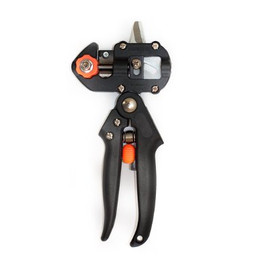
Call us toll free today 800.635.3621
 Some seeds grow easily, but others do better when they start out in controlled conditions that mimic their natural environments. Here are some tips to help you create the right conditions so that your seeds will sprout faster.
Some seeds grow easily, but others do better when they start out in controlled conditions that mimic their natural environments. Here are some tips to help you create the right conditions so that your seeds will sprout faster.
The best way to find out the optimal conditions for your plants is to read the information on the seed packet. It will tell you the best planting date, time until bloom, instructions, and any special needs.
One easy way to make seeds germinate faster is to presoak them for 24 hours in a shallow container filled with hot tap water. Water will penetrate the seed coat and cause the embryos inside to plump up. Don't soak them for longer than 24 hours because they could rot. Plant the seeds immediately in moist soil.
Stratification is the practice of using a period of moist cold to trick seeds into thinking they are experiencing winter. If you are sowing seeds indoors in the spring, soak the seeds and then place them in a zip-top sandwich bag filled halfway with moist, seed-starting medium and then cover them with another inch of medium. Keep the bag in the refrigerator. When the seeds sprout roots, transfer them to pots.
You can also keep seeds that need to be exposed to the cold in pots outdoors in the fall and winter. Spread a thin layer of very fine gravel, such as natural-colored aquarium gravel, over the tops of the pots. Keep the pots close together and bury them to their rims to protect them from severe cold and prevent them from spilling. After the seeds have started to germinate, move the pots to a sheltered nursery area.
Scarification is a process of nicking a seed's coat with a knife or sandpaper so that moisture can reach the seed's embryo. You can use a small pocketknife or rat-tail file to remove a very small slice or section of seed coat, or line a jar with a sheet of sandpaper, put the seeds inside, screw on the lid, and shake it. Scarify the seeds just before you are ready to plant them.
It is easy to care for seeds planted in pots. Many gardeners recommend planting seeds thickly in a flat or tray and then repotting individual seedlings in large containers. You can eliminate the need for transplanting by starting a few seeds in 2 ¼-inch or larger pots and then thinning them with scissors or planting them all in your garden.
You can prevent seedling disease by using a commercial "soilless" seed-starting mix. Pour most of the mix into a large bowl and moisten it with water, fill the container to ½ inch below the rim, pack the medium down to eliminate air pockets, pour three or four seeds into the pot, and press them down into the soilless mix. Cover them if you expect them to germinate in a few days or weeks. Keep the medium moist by watering from above with a fine mist or pouring water onto a tray and letting the pots soak it up from the bottom.
Place seedlings in pots on south- or east-facing windowsills so they will get plenty of light. If you don't have enough space, you can put them indoors under fluorescent lights mounted on chains that can be moved up and down. Seedlings will need 12 to 16 hours of artificial light per day.
After the seedlings begin to emerge, use a water-soluble fertilizer weekly to encourage growth. Follow recommendations for indoor plants or container plants.
Before you plant your seedlings outdoors, they need to be "hardened off" to prevent them from being damaged by sun, wind, and harsh weather. Move the seedlings to a shady area shielded from harsh wind. Leave them there for a couple of hours on the first day and for gradually longer periods of time. After about a week, they will be ready to plant in the ground. It is best to plant them on a drizzly, gray day or in the late afternoon. Water the seedlings before and after planting them.

